The Industrial Revolution
The Industial Revolution, which lasted from 1760 to 1840, changed the way we used typography and gave way to graphic design. Technology was evolving much quicker than before with many of the inventions during the 18 and 19 hundreds changing the course of history forever and with the majority still being used today. With the increase in the educated middle class, the use and need for visual information, advertising and media exploded. Typography grew to include new letterform styles, increasing in size and weights to display large bold type that drew attention to the design.
- In 1814, Friedrich Koenig invented the steam powered printing press which was the fasted printing machine to exist at that time.
- in 1884, Ottmar Mergenthaler created the Linotype which could quickly set lines of type but also allowed for more variety in its printing at a faster rate.
I created my own timeline of just a few of the biggest inventions from the 1800’s to the 19oo’s.

Photography
One invention that changed the future for designers and artist was the first permanent photograph captured by French inventor, Joseph Niepce in 1825, considered to be the inventor of photography. Using a sliding wooden box camera called Obscura, using a pewter coated in semi-solid form of petroleum and 8-hour exposure in a process he called ‘Heliography’ also known as sun drawing. What Niepce captured the view from his window is considered to be the oldest surviving photograph of a real world scene.

Working together with French photographer and inventor Louis-Jacques-Mandé Daguerre, the heliographic process was improved by the experimentation with different chemicals to improve contrast. This partnership sadly ended in 1833 when Joseph Niepce died of a stroke. Daguerre continued experimenting alone and was able to successfully improve the contrast and create a sharper image with mercury vapour and silver iodide. He later developed a process named Daguerreotype where images could be fixed with a common salt solution and for many years after 1837, Daguerre tried to commercialize it. Using this technique, Daguerre was able to capture this famous photograph of a street in France titled ‘View of the Boulevard du Temple’ in 1838. It is considered the earliest image of a person. The image captures a busy street but as the exposure time was 5 or so minutes long the traffic and fast moving objects aren’t visible. A man having his boots polished and the boot polisher the bottom left hand corner where still for long enough to be included on the image.

These two images were taken a little more than a decade a part which is extremely impressive considering the first image is quite blurry and grainy with the second being a beautifully detailed print, closely resembling the quality of photographs that are taken today. This is an example how in such a small space of time a technology went from being non-existent to becoming a crude first iteration of an idea to piece of equipment that worked as intended and would change the world.
Matthew Brady, known as the father of photojournalism, was one of Americas earliest photographers. He was a student of Samuel Morse, who was the leading expert of the Daguerreotype process in America. Matthew Brady is famous for his imagery taken of the Civil War. During the 1840’s, Brady opened his own photography studio in New York and began exhibiting his photographs of famous Americans. This included the likes of Edgar Allan Poe, Daniel Webster, Abraham Lincoln and Andrew Jackson. However, the most significant thing about Bradys career was his photography of the civil war. He Began by taking photos of young soldiers before they were ‘lost to war’ and marketed this to their parents then later joined them on the battlefield to capture the scenes. The Civil War was happening during a time before daily news and many in the public had no real idea of what went on during the battle for independence, but Brady was able to bring the reality of the war never seen before. His first set of photographs to gain popularity where from the conflict and First Battle of Bull Run, where most of the time the images were gathered after the battle had finished, Brady narrowly avoided capture and came under direct fire during the First Battle of Bull Run.
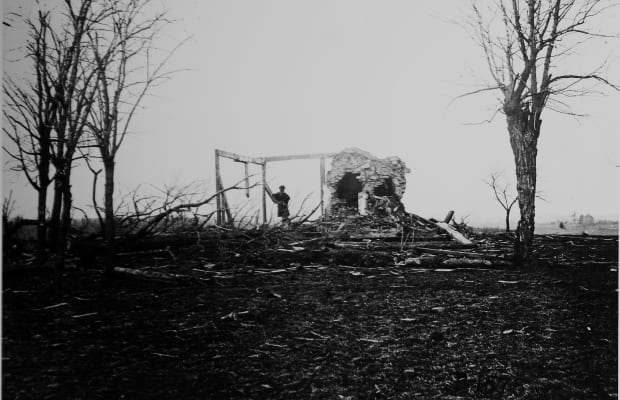
Documentation of war through imagery still remains an important aspect of recording history with the likes of Gerda Taro who captured horrifying images of the second World War or Howard Sochureks powerful imagery captured at the beginning of the 20 year long Vietnam war.
Moving Images
One of the most important inventions for communication, media and entertainment was the use of moving images that developed as photography evolved. Multiple frames of an object moving would have been displayed in sequence of the movement so the viewer could get a sense of the object in motion. This then developed into the same series of photographs or illustrations that could be spun quickly to create the illusion of motion with a single frame using a device such as the phenakistoscope and zoetrope. This was the beginning of cinematic processes.
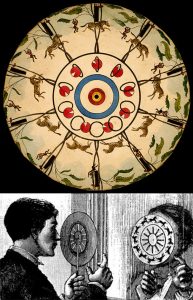

A contemporary artist, Bill Brand, created a public artwork names ‘Masstransiscope’ in a subway station in Brookyln, based on these earlier ideas but rather than the images moving to create the animation, the viewer does. It consists of a 300 foot long painting, installed in the tunnel of the subway with 228 narrow slits towards the side of the train. The inside of the special enclosure is illumined by florescent lights where they reflect of the painting and back through the slits to the viewer on a passing train. Brand describes it as “the reversal of the normal film process where you sit in the theatre and the film passes through projector, here the film sits still and you pass by it.”

Eadweard Muybridge, an English photographer, began the era of moving film with his over 20,000 photographic work on animal locomotion, using multiple images to capture motion using stop-motion. This was the precursor to the popularly used today GIF and many popular animated movies.
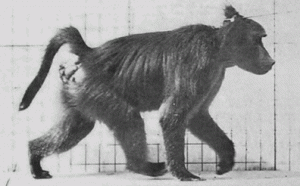
Muybridge’s work explored the human curiosity we all posses. During a time where machines had newly became apart of everyday life from the factories of the Industrial Revolution, people such as Muybridge began to realise the similarity between those machines and the human body.
Japonisme
Japonisme is a French term that describes is the influence and popularity of Japanese art and design that occurred in Western Europe during the 19th Century, following the forceful reopening of trade with Japan in 1858. Processes that developed in Japan such as woodblock printing where now being utilised by European artists. Before then, scenes looked staged and stiff and while beautiful and realistic, not much was left to the imagination with this style of art. Impressionist artist began experimenting with these techniques and took inspiration from the woodblock prints created by the masters of the Ukiyo-e school. The brilliant colour, high detail and stylisation transformed Impressionism, along side the development of photography, artists no longer needed to recreate realistic paintings of what they saw.

Mary Cassatt, an artist at the time, stated that she hated ‘conventional art’ and found the woodcuts like those from Utamaro as a fresh approach to depicting the everyday lives of women. Kitagawa Utamaro was a Japanese artist during the 18th century the who is famous for his ukiyo-e woodblock prints and paintings of Bijin-ga, which means pictures of beautiful women.



During the time when Japonism began, ukiyo-e artists moved towards creating scenes from nature, such as landscapes, flowers and birds. The landscape that was depicted was much different from what would be shown in traditional Western art as it utilised the atmosphere of a scene, composition and the artists imagination rather than the strict rules of copying the real world exactly. One such artist was Hokusai who created a series of landscape prints published from 1830 to 1832, that shows Mount Fuji during all four seasons as seen from different locations and weather conditions. The most famous print out of the 36 he published was the first, titled ‘The Great Wave off Kanagawa’ shows a giant wave looming over 3 small boats with Mount Fuji off in the distance appearing almost like a wave itself. Sometimes called The Wave, it has often considered to be one of the most famous examples of Japanese art in the world.

Influence from the Japanese style can be seen in works such as Claude Monet and particularly in Vincent Van Gogh’s ‘The Starry Night’ which has the same wave motion in the sky made with bold vibrant colours making this stylised landscape painting much more interesting than what it would have been.

Arts & Crafts Movement
Due to the ability to mass produce goods thanks to industrialisation, artist now felt that art and design had become less personal, with the machines had creating products with less integrity and in a more dehumanising way than before. This is when the Arts and Crafts movement in Britain began seeking a change in the way society had accepted machine-dominated production of goods in favour of handcrafted goods created by artists. The movement gained its name from the Arts and Crafts Exhibition Society, a London based group founded in 1887. The Arts and Crafts subjects were based on nature, inspired by British fauna and flora with the decorative artists basing emphasises on the beauty of well made objects that could be used in everyday life. using bold forms and strong colours artists also took inspiration from old techniques, the Gothic Revival and Meadville styles.
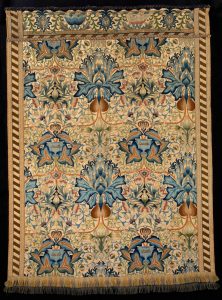
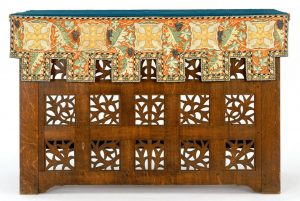
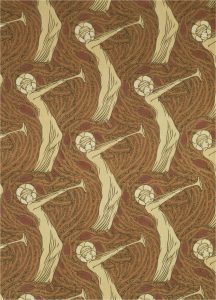
John Ruskin was a social thinker and in many of his writings he underlined the connection between nature, society and art.. His social philosophy of machinery being to blame for many of the problems people faced in the 19th century was a big part of the Arts and Crafts movement, believing that a healthy society was one that consisted of skilled and creative workers. William Morris was also a key figure in the Arts and Crafts movement who dedicated his life to improving the quality of British design. Morris is best known for is patterns on wallpaper and fabric designs and used fine art in tandem with the production of commercial design which was a important stage in the development of modern design. He created tessellated patterns which were highly detailed and bright often with an illustrated feel. Morris was also multiskilled, as many designers were back then, publishing high quality hand bound books where he designed the typefaces, ornamental orders and initial lettering, playing a hand in the revival of the private press.
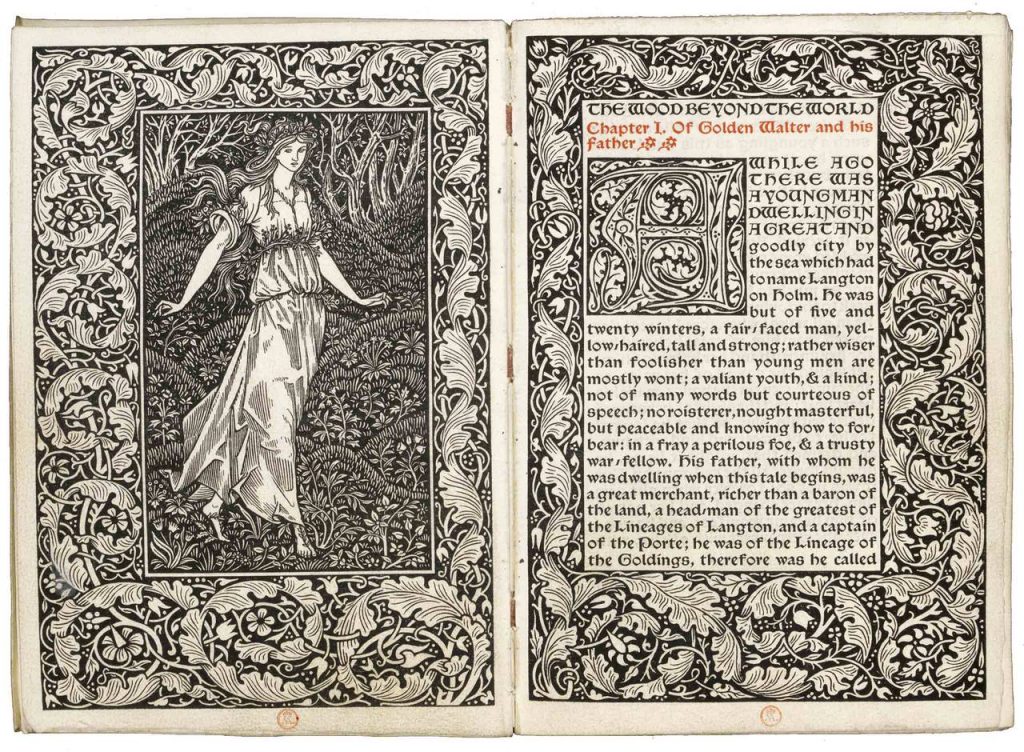
JRR Tolkien, the author of The Lord of The Rings, took a lot of inspiration from the decorative style found in the Arts and Crafts movement as well as Art Nouveau and this is evident throughout many of Tolkien’s illustrations from the late 1920’s. He even wrote in a letter to his wife explaining that he had tried some of William Morris’s lettering techniques. The Art Nouveau influence can be seen in his ‘Elvenlands’ illustrations
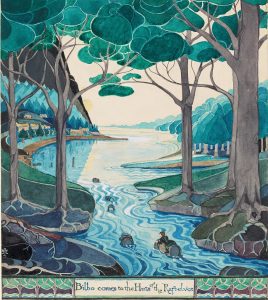


Sources
https://www.theatlantic.com/entertainment/archive/2016/07/eadweard-muybridge/483381/
https://en.wikipedia.org/wiki/Mathew_Brady#cite_note-12
https://en.wikipedia.org/wiki/History_of_the_camera
https://www.vam.ac.uk/articles/introducing-william-morris?gclid=Cj0KCQiA2sqOBhCGARIsAPuPK0gKDKLnKCVtaljk0LXVfGdoSacjivq12Oc5OH1Km3YiaRG3HH4GrFQaAitCEALw_wcB
https://www.tate.org.uk/art/art-terms/j/japonisme
https://ansereg.com/ArtsandCraftsandTolkien.pdf
https://www.vam.ac.uk/articles/arts-and-crafts-an-introduction
https://www.metmuseum.org/toah/hd/jpon/hd_jpon.htm
https://en.wikipedia.org/wiki/The_Great_Wave_off_Kanagawa
Comments